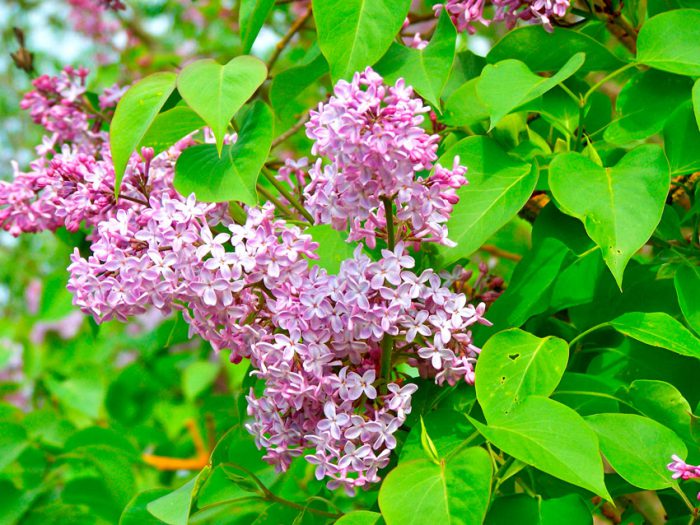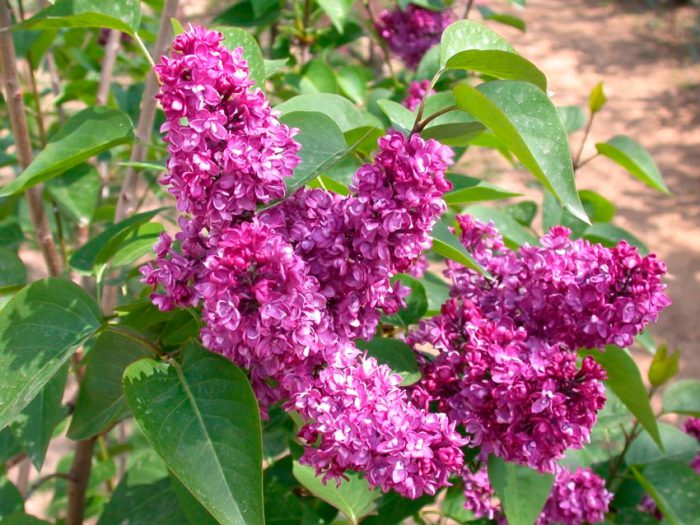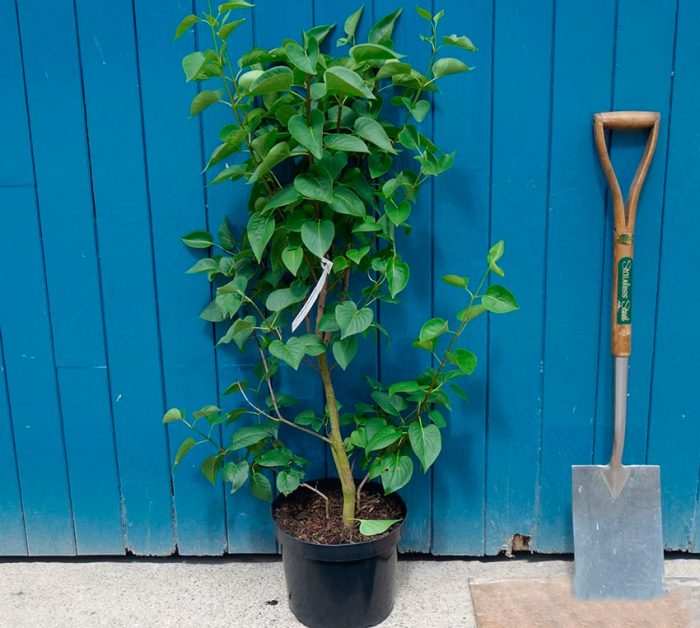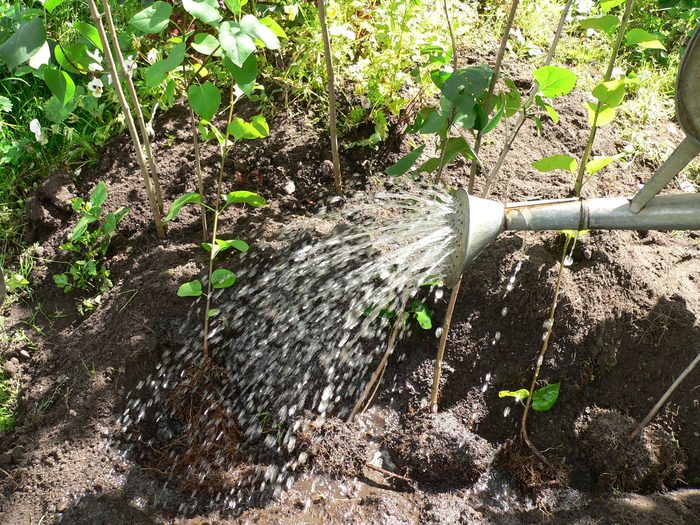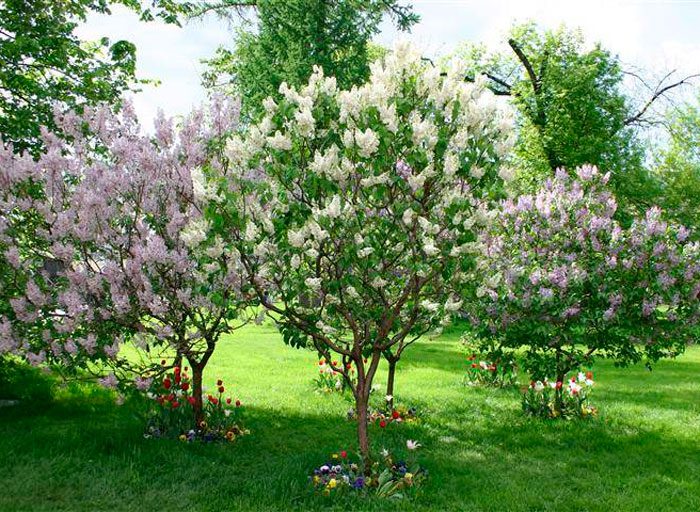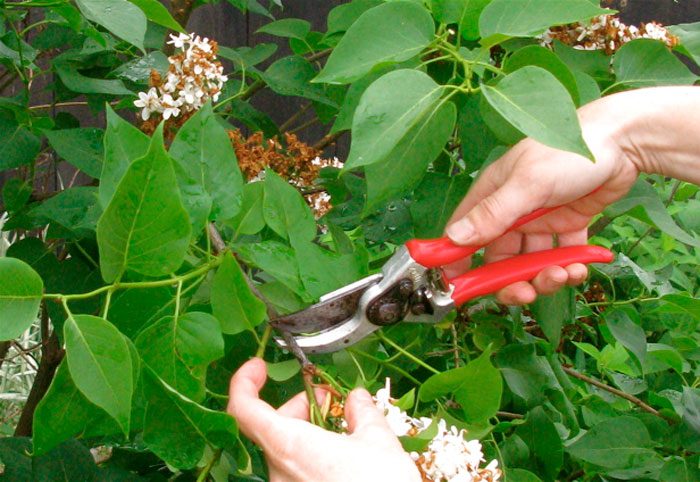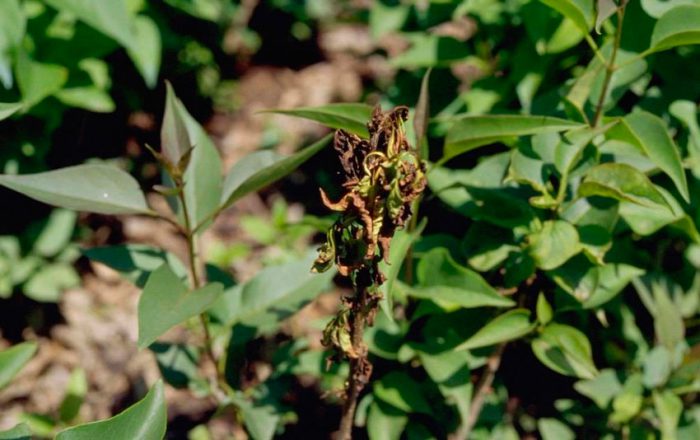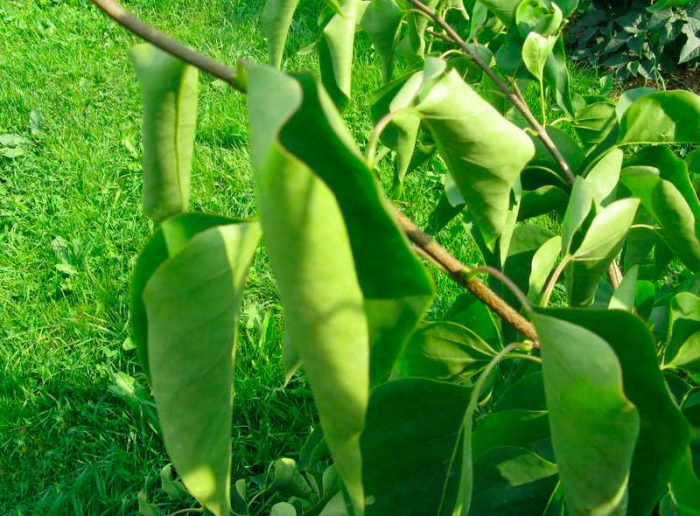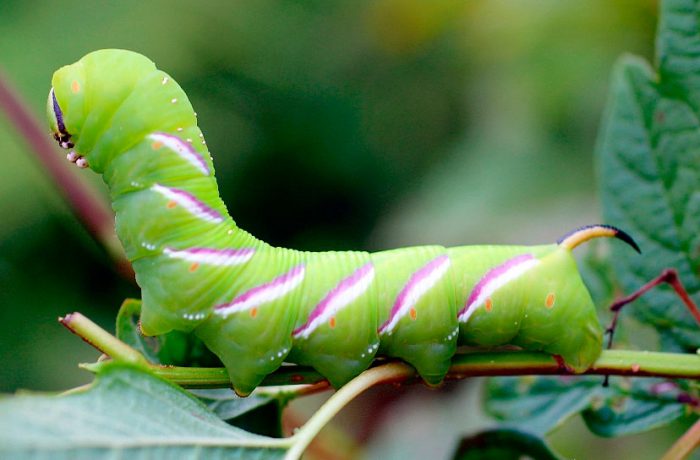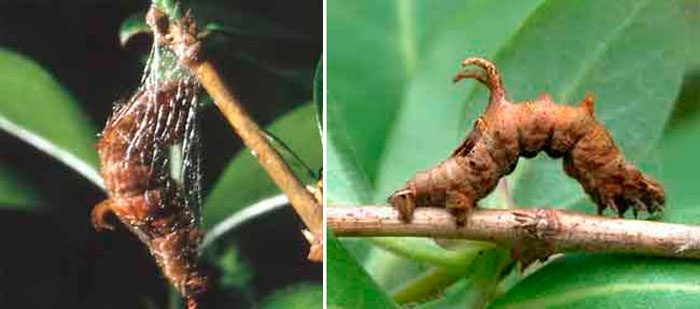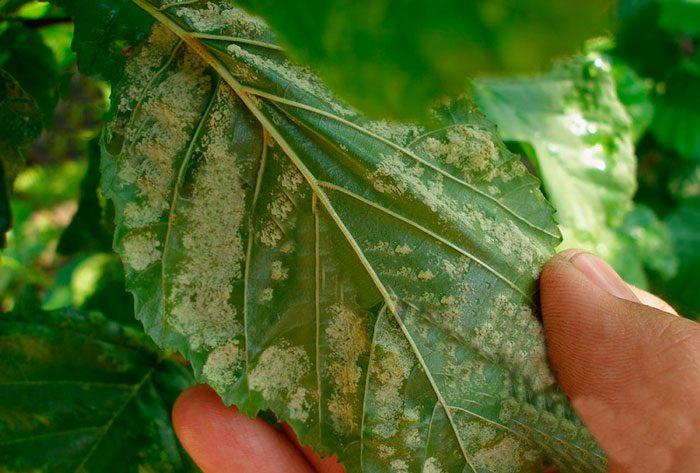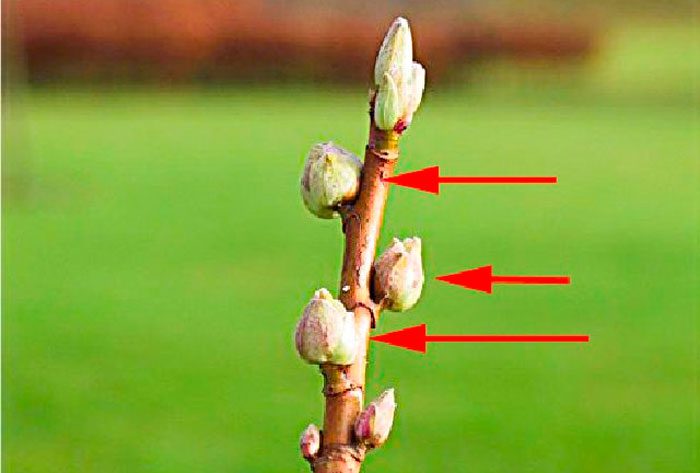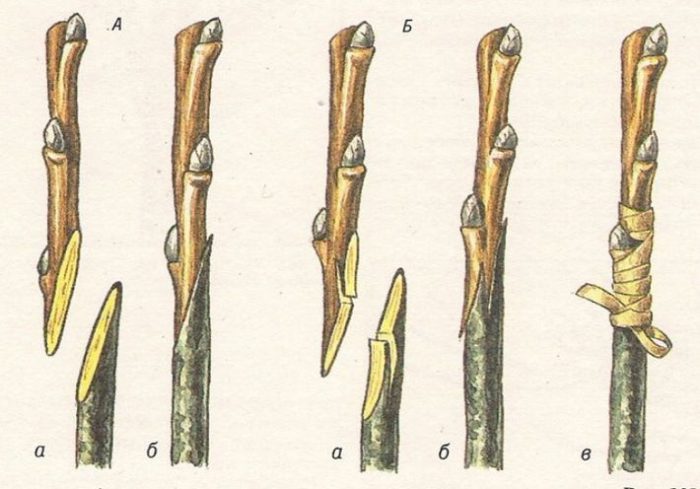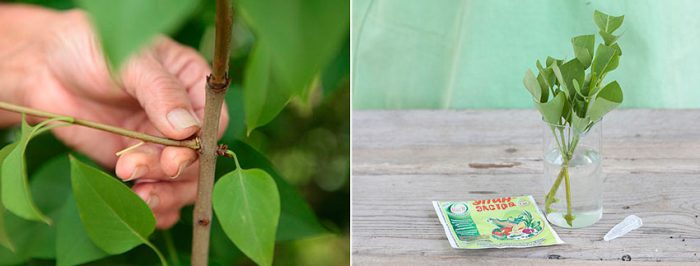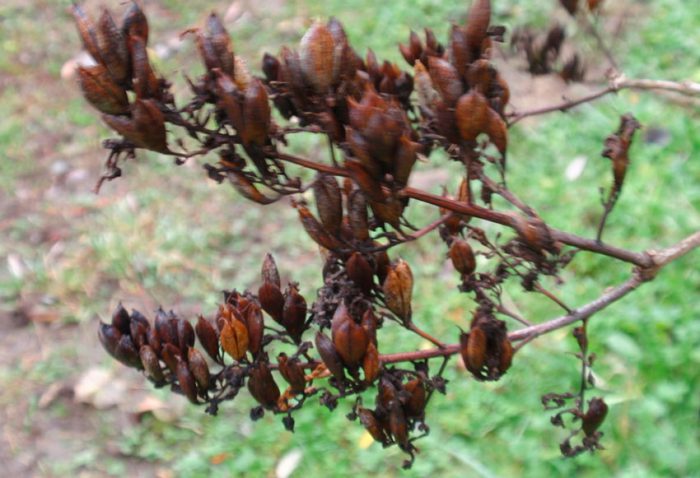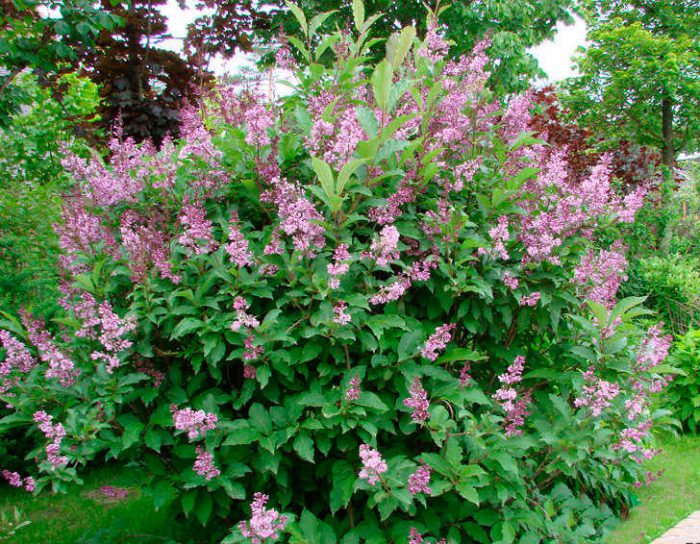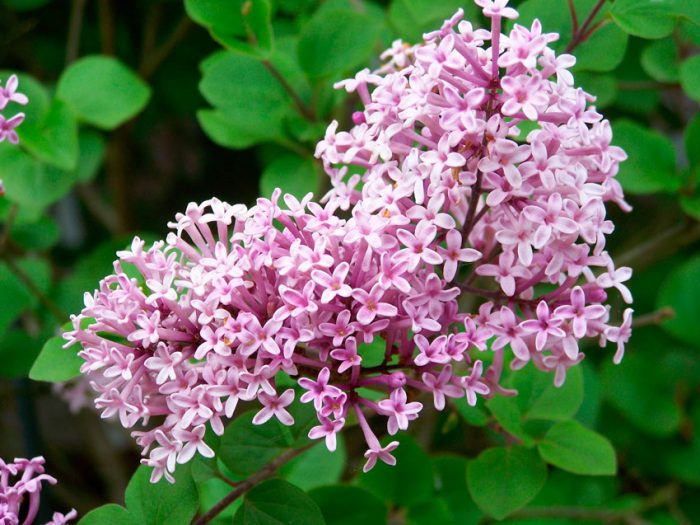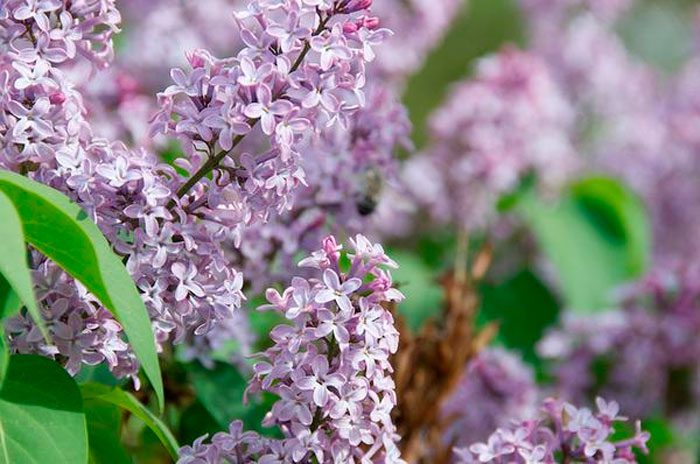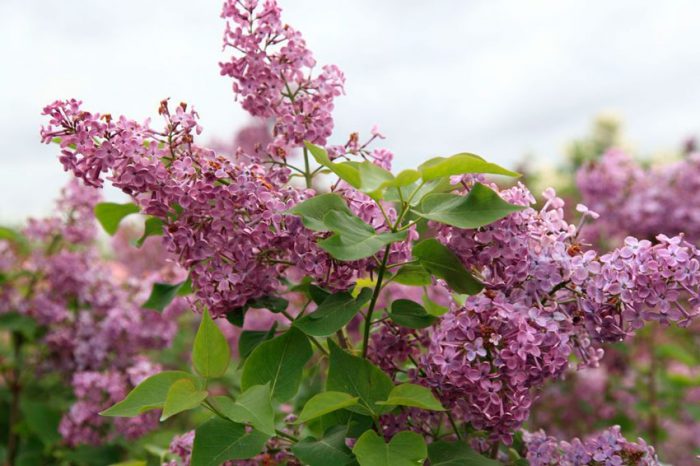Such a shrub as lilac is a representative of the olive family. According to information taken from various sources, this genus unites from 22 to 36 species. In nature, such species can be found in the mountainous regions of Eurasia. The genus lilac has a typical species - common lilac (Syringa vulgaris). Under natural conditions, such a shrub can be found along the lower course of the Danube, on the Balkan Peninsula and in the South Carpathians. Lilac is cultivated as an ornamental plant, and it also strengthens and protects slopes that are exposed to erosion. In the second half of the 16th century, the Roman ambassador brought lilacs to European countries from Constantinople, since that time this plant has appeared in the gardens of Europe. The Turks called this shrub "lilak", and the inhabitants of Germany, Flanders and Austria gave it the name "lilac" or "Turkish viburnum".
At first, lilacs were not in great demand among European gardeners, because it did not bloom for long, and loose inflorescences with small flowers did not have high decorative effect. But everything changed after the Frenchman V. Lemoine received several dozen varieties of this plant, which were distinguished by lush and long flowering, as well as beautiful dense inflorescences with the correct shape. And he also managed to breed several varieties with double flowers of various colors. Emile Lemoine continued his father's activities, as did his son Henri. Thanks to the Lemoins, 214 varieties of lilacs were born. Of the French breeders of lilacs, they paid attention to: Auguste Gouchaux, Charles Balte and Francois Marel. At the same time, in Germany, Wilhelm Pfitzer and Ludwig Shpet worked on the development of new varieties of lilacs. In Holland, at the beginning of the 20th century, new varieties of this shrub were born, and Klaas Kessen, Dirk Evelens Maarse, Jan van Tol and Hugo Koster worked on this, and the Polish breeder Karpov-Lipsky also worked in this direction.
At the beginning of the 20th century, lilac became quite popular in North America, while its new varieties were born thanks to such breeders as John Dunbar, Gulda Klager, Theodore Havemeyer and other rather famous specialists from Canada and the United States. Also, new varieties of lilacs were bred in Belarus, Russia, Ukraine and Kazakhstan. Today, there are more than 2300 varieties of this plant, which differ from each other in color, size and shape of flowers, flowering time, habit and size of bushes. 2/3 of all varieties were bred using common lilac.
Content
Features of lilac
Lilac is a deciduous, multi-stemmed shrub that varies in height from 2 to 8 meters. The diameter of the trunks is about 0.2 meters. The color of the bark is brown-gray or gray. Young trunks are covered with smooth bark, while old ones are fissured.
The foliage blooms relatively early, while it stays on the branches until the onset of frost. The length of opposite leaf plates is about 12 centimeters, as a rule, they are solid, but there are also pinnately-separated. In different species, the shape of the leaf can differ, for example, it is heart-shaped, oval, ovoid or elongated, sharpened in the upper part. The color of the foliage is dark or pale green. The length of the terminal drooping panicle inflorescences is about 0.2 m, they include flowers that can be colored lilac, blue, pink, white, purple or violet. The flowers have a short, bell-shaped, four-toothed calyx, 2 stamens and a corolla with a four-part flat limb and a cylindrical long tube. Many are interested in exactly when the lilac flowers bloom. It depends on several factors, namely: the species, weather and climatic conditions. Such a shrub can bloom from the last days of April to the first - June. During the flowering of lilacs, the garden is filled with a unique, delicate and very pleasant aroma. The fruit is a bivalve capsule with several winged seeds inside.
If you provide the plant with the most favorable conditions, then its life expectancy can be about 100 years. Lilac is very easy to care for, it is frost-hardy and is one of the most popular ornamental shrubs, along with hydrangea and chubushnik (garden jasmine).
Planting lilacs in the garden
What time to plant
The best time to plant lilacs in open soil is from mid-July to early September. It is not recommended to plant such a shrub in spring or autumn, as it does not take root well and almost does not grow for 1 year. For planting, choose a sunny place with moderately moist soil saturated with humus, and its acidity should be 5.0-7.0.
When buying seedlings, be sure to carefully examine their root system. You should stop your choice on a plant with a well-developed and branched root system. Before planting a seedling, all injured roots that have begun to dry out and damaged by the disease should be cut out from it, the remaining ones should be shortened to 0.3 m. Injured stems should be removed, and excessively long ones should be shortened.
Landing features
When planting several seedlings, do not forget to leave between them from 2 to 3 meters (depending on the type and variety) of an empty space. When preparing a pit for planting, it should be borne in mind that it must have sheer walls. If the soil fertility is high or medium, then the size of the pit will be 0.5x0.5x0.5 meters. If the soil is poor or sandy, then the hole needs to be made 2 times larger, because during planting the seedling it will be necessary to fill it with a nutritious soil mixture, which includes: humus or compost (from 15 to 20 kilograms), wood ash (from 200 up to 300 grams) and superphosphate (20 to 30 grams). Wood ash should be taken 2 times more if the soil on the site is acidic.
At the bottom of the pit, you need to make a good drainage layer, for this you can use crushed stone, expanded clay or broken brick.Then a nutritious soil mixture is poured into the pit so that a mound is obtained. Further, the plant is installed in the center of the pit directly on the mound. After its root system is straightened, the pit must be completely filled with soil mixture. In planted lilacs, the root collar should rise by 30–40 mm above the surface of the site. The planted shrub must be well watered. When the liquid is completely absorbed into the soil, its surface will need to be covered with a layer of mulch (peat or humus), the thickness of which should be within 5-7 centimeters.
Caring for lilacs in the garden
It is very easy to grow lilacs in your garden, especially since caring for it will not take a lot of time from the gardener. This shrub can grow without your participation, but it will be very good if from the beginning to the middle of the summer period you provide it with systematic watering as the soil dries up, while 2.5-3 buckets of water should be poured under 1 bush at a time. During the season, you will need to loosen the surface of the trunk circle 3 or 4 times to a depth of 4 to 7 centimeters. Also, do not forget to remove weeds in a timely manner. In August and September, watering such a plant is necessary only when there is a prolonged drought. After 5 or 6 years, the lilac will become a very spectacular bushy bush.
For the first 2 or 3 years, lilacs are fed with only a small amount of nitrogen. Starting from the second year, ammonium nitrate is applied under each shrub in an amount of 65 to 80 grams or urea from 50 to 60 grams. But experienced gardeners recommend feeding the lilacs with organic matter, for this you need to pour 10-30 liters of slurry under the bush (cow dung should be dissolved in water in a ratio of 5: 1). To begin with, make a not very deep groove around the bush, stepping back at least 50 cm from the trunks. Pour the nutrient mixture into it.
Once every 2 or 3 years, the plant is fed with phosphorus and potassium, for this, for 1 adult bush, you should take from 35 to 40 grams of double superphosphate and from 30 to 35 grams of potassium nitrate. The granules should be buried 6-8 centimeters in the near-stem circle, then the plant must be watered without fail. However, the lilac responds best of all to feeding with a complex fertilizer, consisting of 8 liters of water and 0.2 kilograms of wood ash.
Transfer
Gardeners with considerable experience strongly recommend replanting it after 1 or 2 years from the date of planting. The fact is that such a plant very quickly consumes all the nutrients available in the soil, even despite systematic feeding. In this regard, after 2 years, the soil will no longer be able to provide the lilac with the necessary energy for lush and incredible spectacular flowering, and rapid growth.
Three-year-old bushes are transplanted no earlier than August. It is necessary to transplant young plants immediately after flowering at the end of the spring period, otherwise they will not be able to root normally until the first frost. The transplant pit must be made in the same way as for planting. Then you should inspect the plant and cut out injured, dried out or unnecessary stems and branches. The shrub is dug in along the projection of the crown perimeter and pulled out of the ground along with a lump of earth. Then it is placed on a dense fabric or oilcloth and moved to a new landing site. The size of the new hole should be such that not only a bush with a lump of earth would fit in it, but also a sufficiently large amount of fertile soil.
Pruning
Before the bush turns 2 years old, it does not need to be cut off, since the skeletal branches at this time are still in the stage of formation. In the third year of a lilac's life, the formation of its crown should begin, this process will take from 2 to 3 years. Pruning is carried out in the spring, before sap flow begins and before the buds swell.To do this, choose from 5 to 7 beautiful, equidistant from each other branches, and the remaining ones are removed. Remember to cut out all root growth. Next year, you will need to remove about ½ of the flowering stems. The main principle of pruning is that there should be no more than eight healthy buds on one skeletal branch, while the excess part of the branch must be removed to avoid overloading the shrub during flowering. Simultaneously with the formation of the bush, sanitary pruning is also carried out. To do this, remove all injured, drying out, damaged by frost or disease, branches and shoots, as well as those that do not grow properly.
Lilac, if desired, can be shaped like a tree. To do this, you need to choose a seedling that has a powerful, straight, vertically located branch. It is necessary to shorten it to the height of the trunk, and then from the shoots that will grow, it is necessary to form 5 or 6 skeletal branches, while do not forget to regularly free the trunk and the near-trunk circle from overgrowth. After you finish the formation of the standard lilac, you only need to thin the crown every year.
Lilac care during flowering
When warm weather settles outside in spring, the lilacs will bloom, and its very delicate aroma will attract a huge amount of beetles. It is necessary to remove May beetles from the bush manually. During the active flowering period, approximately 60 percent of all flowering stems will need to be removed. This procedure is called pruning "for a bouquet", it is necessary so that young stems are formed more intensively, as well as to increase the number of flower buds that are laid for the next year. To extend the life of a bouquet of lilacs, cut it early in the morning, and do not forget to split the lower part of the cut branch. At the end of flowering, cut off all inflorescences that have begun to fade from the shrub.
Pests and diseases of lilacs with photo examples
Lilac has a fairly high resistance to diseases and pests. But in some cases, she can get sick with bacterial necrosis, bacterial rot, powdery mildew or verticillosis. And also on the bush can settle hawk moths, mining moths, bud or leaf mites and lilac moth.
Bacterial, or non-cystic, necrosis
If in August the green foliage changed its color to gray-ash, and at the same time the young shoots turned brown or brown, then this means that the bush is infected with bacterial (nectria) necrosis. For prevention purposes, it is recommended to systematically thin out the crown of the plant to improve ventilation, cut off the affected areas and get rid of pests in a timely manner. If the damage to the bush is significant, then it will need to be dug up and destroyed.
Bacterial rot
Bacterial rot damages the foliage, flowers, stems and buds of the plant. In some cases, wet spots appear on the root surface, which grow very quickly. As the disease progresses, the foliage loses its turgor and dries up, however, its fall does not occur immediately, drying and bending of the stems is also observed. In order to cure lilacs, it is necessary to carry out 3 or 4 sprays with copper oxychloride, while the interval between procedures should be 1.5 weeks.
Powdery mildew
Powdery mildew is a fungal disease that can harm both young and old shrubs. A loose whitish-gray bloom appears on the surface of the foliage, over time it thickens and becomes brown. The progression of this disease is observed in hot dry summers. It is necessary to start treatment of the plant as soon as the first signs of the disease were noticed. The first step is to cut and destroy all areas affected by the disease, then spray the bush with a fungicide.At the very beginning of the spring period, you should dig up the soil with bleach (per 1 square meter 100 grams), while trying not to injure the root system of the bush.
Verticillary wilting
If you notice that the lilac foliage folds, brown or rusty specks appear on its surface, and they gradually dry out and die off, then this is a sign of another fungal disease - verticillary wilting. The bush begins to dry out from the top, while the disease spreads extremely quickly. The affected bush should be treated with a solution consisting of 1.5 buckets of water, 100 grams of soda ash and the same amount of laundry soap. Spraying the bush with Abiga-Peak also shows good results. Cut out all infected areas and destroy them along with the loose leaves.
Lilac hawk
The lilac hawk moth is a large butterfly with a marble pattern on its front wings, it prefers a nocturnal lifestyle. In the caterpillar stage, this pest reaches 11 centimeters in length. You can distinguish it from other pests by its dense horn-like outgrowth located in the back of the body. The moth caterpillar settles not only on lilacs, but also on meadowsweet, currants, viburnum, ash and grapes. To get rid of such a pest, you will need to treat the shrub with Phthalofos solution (1%).
Lilac moth
The lilac moth prefers to live on hedges and light forests. In one season, such a pest is able to give 2 generations. Its small caterpillars eat flowers, buds and buds completely, and only veins rolled into a tube remain from the leaf plates. The affected shrub should be sprayed with Fozalon or Karbofos.
Lilac leaf mite
The lilac leaf mite is a very small insect that feeds on lilac plant sap while sucking it off the underside of the foliage. The leaves gradually dry up and change their color to brown. For prevention purposes, spraying lilacs on the foliage with a solution of iron or copper sulphate should be done, and also systematically thinning the crown and feeding the plant with phosphorus-potassium fertilizer. Do not forget to collect and destroy fallen leaves in the fall.
Lilac kidney mite
The lilac bud mite spends its entire life in the buds of the plant. He sucks the juice out of them, and also survives in the kidneys and winter. As a result, the buds are deformed, the stems and foliage that grow from them are underdeveloped and weak, there is no flowering and over time the plant may die. For prevention purposes, at the very beginning of the spring period (after the frosts are left behind), it is necessary to remove all the fallen leaves and cut off the root shoots, then dig up the soil in the near-trunk circle with a full bayonet with turning the soil, and then the bush is treated with a solution of copper sulfate.
Miner moth
The miner moth can harm the lilac foliage. Initially, a lot of brown dark specks (mines) appear on its surface, and after a while the plates roll up into a tube as if from fire. Infected plants do not bloom, and after 1 or 2 years they die. To get rid of such a moth, it is necessary to abundantly spray the foliage with a solution of Bactofit or Fitosporin-M, or you can use Bordeaux liquid. For preventive purposes, in the autumn, it is mandatory to collect and destroy plant residues, while before frosts and at the very beginning of the spring period, it is necessary to deeply dig the soil in the trunk circle.
Reproduction of lilac
Such a plant is propagated by seeds only by specialists in nurseries. For the propagation of varietal lilacs, gardeners use such vegetative methods as: layering, grafting and grafting.If desired, you can purchase grafted or self-rooted seedlings, which were obtained from cuttings or cuttings. The advantages of self-rooted lilacs over grafted ones are that it is less demanding, recovers relatively quickly after wintering, and can be easily propagated by vegetative methods. Own-rooted lilacs are more durable.
Reproduction of lilacs by grafting
The following rootstocks are used for varietal lilacs: Hungarian lilac, common lilac and common privet. It is possible to oculate the bush with a dormant bud in the summer, and in the spring, an awakening bud is used for this. In this case, it is recommended to vaccinate in the spring, since at this time more than 80 percent of the cuttings take root. In order to make the spring grafting, cuttings are harvested in February or March, then they are wrapped in a paper sheet and placed on a refrigerator shelf (temperature 0-4 degrees). For harvesting cuttings, ripe annual shoots covered with brown bark are used.
Stock preparation should also be done in advance. To do this, you need to cut the side stems to a height of 15 to 20 centimeters and cut out all the root growth. At the rootstock, the root collar should not be thinner than a pencil, while the bark should be well separated from the wood; for this, the plant must be provided with systematic abundant watering 7 days before grafting. On the day of vaccination, to begin with, all the soil is removed from the root collar of the stock. Next, a clean moistened cloth is taken to wipe the vaccination site. Split the rootstock stump in the center to a depth of 30 mm using the budding knife. At the scion cuttings, the lower end must be cleaned on both sides to a height of 30 mm, as a result a wedge should be obtained. It is necessary to insert the scion wedge into the rootstock split so that the barked area is completely immersed in the split. After that, the vaccination site must be wrapped with tape, while its sticky surface should look outward. Next, the damage is processed and the places from which the buds were cut off; for this, a garden pitch is used. Then a plastic bag should be put on the grafted stalk, and it must be fixed just below the grafting site, this will help create a greenhouse effect. The package must be removed only after the swelling of the kidneys is noticed on the scion.
For this procedure, choose a dry sunny day. You need to vaccinate from 16 to 20 pm or from 5 to 10 am.
Lilac propagation by layering
In springtime, you need to find a young stem that has begun to lignify. It should be pulled with copper wire at the base and in one more place, stepping back from the first 0.8 m, while trying to keep the bark not injured. Then the shoot is placed in a previously prepared groove, the depth of which is from 15 to 20 mm. It is fixed in this position with pins, so that only the upper part remains on the surface. After some time, young stems will begin to grow from the layer upward, after their height is 15-17 centimeters, these shoots must be covered with nutritious soil, while they are covered with earth at least half the height. In the summer, ensure the layering of systematic watering and weeding, and 1 or 2 more times during the season add soil under the stems that have begun to grow. After it gets colder on the street, you should cut off the layering at the constriction points. It will need to be cut in such a way that on each of the parts there is a shoot with roots. Such a plot can be planted on a school garden bed for growing, and if desired, it is planted in open soil in a permanent place. Young bushes planted in open ground need shelter for the winter.
Propagation of lilac by cuttings
Cuttings of this shrub are quite difficult to root, and in order for this procedure to end successfully, 2 important rules must be taken into account:
- Cutting should be started as soon as the plant has faded, or do it during flowering.
- Cuttings are cut in the morning from young bushes. For this, non-lignified stems are suitable, located inside the crown, which have an average thickness, short internodes and from 2 to 3 nodes.
The cut at the top is made at a right angle, and at the bottom - obliquely. The leaf plates located in the lower part of the cutting must be cut off, and in the upper part they must be shortened by ½ part. Next, an oblique cut of the cuttings is immersed in a solution of an agent that stimulates root growth. There he must stay at least 16 hours.
For the cuttings to take root well, prepare a cutting box or greenhouse. For rooting, it is recommended to use a substrate consisting of peat and sand (1: 1). If desired, the sand is partially replaced by perlite. For a start, the container needs to be sterilized, then a layer of soil twenty centimeters thick is poured into it, which must first be treated with Maxim or Fundazol. On top of this soil, a five-centimeter thick layer should be placed, consisting of calcined river sand. To begin with, the tips of the cuttings should be rinsed using clean water to remove the remnants of the root former. Then the cuttings are buried in a layer of sand and maintain such a distance between them so that the foliage of one plant does not touch the leaves of the neighboring one. The planted cuttings must be moistened with a spray bottle, and then they are covered with a lid, always transparent. In the event that a regular box or container is used for cuttings, then to cover the cuttings, take a 5 liter plastic bottle and cut off the neck of it. Turn the container over and cover the handle with it. Cuttings for rooting are removed in partial shade. Please note that the sand in the container must not dry out. Systematically humidify the air under the coating using a spray bottle, since the percentage of air humidity there should be 100. To prevent fungal diseases, the cuttings should be sprayed with a weak solution of potassium manganese once every 7 days.
The rooting of cuttings can take from 40 to 60 days. Then they will need to be ventilated every day in the evening, after some time the shelter must be removed for good. When roots appear in the summer, the cuttings will need to be planted in a well-lit area, while the soil should be slightly acidic and light. For wintering, they need to be covered with spruce branches. In the event that the appearance of the roots occurred at the end of summer or in the fall, then the plants are left for wintering in the place of rooting; they can be planted in a permanent place only in spring. Shrubs grown from cuttings begin to bloom in the 5th year.
Lilac propagation by seeds
If you have a great desire to grow lilacs from seeds, then of course you can try. Seeds are collected in autumn in rainy weather. The collected boxes should be dried at room temperature for several days. The recovered seeds should be stratified. The seeds are combined with moistened sand (1: 3), the mixture is poured into a container or bag and put into the refrigerator on a vegetable shelf. There she must stay for 8 weeks. It should be borne in mind that the sand should be constantly slightly damp.
Seeds are sown in the second decade of March and buried in the soil by 1.5 cm. For sowing, garden soil is used, which must be fried or steamed. The surface of the substrate must be moistened with a spray bottle. The first seedlings may appear in 2-12 weeks. After half a month from the moment the seedlings appear, they must be planted, observing a distance between the plants of 40 mm. After warm weather is established outside, the seedlings can be transplanted into open ground.
Sowing seeds can be done before winter in slightly frozen soil. In this case, it is not necessary to preliminarily subject the seeds to stratification.In spring, seedlings will appear, which must be dived and sent for growing.
Lilac after flowering
Adult lilacs are highly winter-hardy and do not need shelter for the winter. However, the near-stem circle in young plants must be insulated with fallen leaves and peat, while the layer thickness should be 10 centimeters. It happens that in winter, varietal lilacs are damaged by frost, in this regard, in the spring it will be necessary to prune the stems damaged in winter.
Types and varieties of lilacs with photos and names
There are about 30 types of lilacs, most of which can be found in gardens and parks. Below will be a description of the most popular species and varieties of such a shrub.
Amur lilac (Syringa amurensis)
This shade-loving hygrophyte is found in deciduous forests of the Far East and northeastern China. This species needs a well-moistened soil. It is represented by a multi-stemmed tree with a lush, spreading crown. Plant height is about 20 meters. This species is cultivated as a shrub, the height of which does not exceed 10 meters. The foliage shape of this plant is similar to the leaf plates of common lilac. When the leaves are just opening, they have a purple-green color, in the summer their front surface is dark green, and the back is paler. In autumn, the color of the foliage changes to yellow-orange or purple. The length of the strong panicle inflorescences is about 25 centimeters, they consist of small white or cream flowers with a honey smell. Such a plant is frost-resistant and does not need shelter for the winter. It is grown both solo and in group plantings, and this shrub is also suitable for creating a hedge. Cultivated since 1855
Hungarian lilac (Syringa josikaea)
The homeland of this species is Hungary, the Carpathians and the countries of the former Yugoslavia. The height of the shrub is about 7 meters. Branched dense stems directed upwards. Glossy dark green leaf plates of wide elliptical shape reach a length of 12 centimeters and have a ciliated edge. The lower surface of the leaf plates is greenish-gray, sometimes there is pubescence on the central vein. Rare narrow panicle inflorescences are divided into tiers. They consist of small lilac flowers with a mild odor. Such a plant is unpretentious, resistant to urban conditions, it is widely used to create group and single plantings. Cultivated since 1830. Popular garden forms:
- Pale... The color of the flowers is light purple.
- Red... The inflorescences are purple-red.
Meyer's lilac (Syringa meyeri)
The compact plant reaches a height of only 150 cm. The length of small leaf plates is from 20 to 40 mm, they have an elliptical shape, taper towards the top, and have a ciliated edge. The front surface of the foliage is glabrous, dark green, and the back is paler and has pubescence along the veins. The length of the erect inflorescences is 3-10 centimeters, they consist of fragrant pale flowers of pink-lilac color. The species is frost-resistant.
Persian lilac (Syringa x persica)
This hybrid was obtained by crossing finely cut lilac and Afghan lilac. The height of the shrub is about 3 meters. The length of dense thin leaves is about 7.5 centimeters, they are pointed, lanceolate. Wide loose panicle inflorescences are composed of fragrant lavender flowers, the diameter of which is 20 mm. Cultivated since 1640. Popular forms:
- White lilac. The color of the flowers is white.
- Red lilac with red flowers.
- Dissected. This dwarf Persian lilac has spreading branches and small pinnately-lobed openwork leaf plates.
Chinese lilac (Syringa x chinensis)
This hybrid was obtained by crossing Persian lilac and common lilac. This species was obtained in France in 1777. The height of the bush is about 5 meters.The length of the ovate-lanceolate pointed leaf plates is about 10 centimeters. The length of the wide-pyramidal drooping panicle inflorescences is about 10 centimeters, they consist of very fragrant flowers, the diameter of which is 1.8 cm.The flowers in the buds are painted in a deep purple color, and when they bloom, they are purple-red. Popular forms:
- Double. The color of the double flowers is purple.
- Pale purple.
- Dark purple. This form is the most effective of all those related to Chinese lilac.
Lilac hyacinth (Syringa x hyacinthiflora)
This hybrid is the result of the work of V. Lemoine. It is created using common lilac and broadleaf lilac. The leaf plates have a sharp apex and are broadly ovate or heart-shaped. In autumn, their dark green color changes to purple brown. The flowers are similar to those of common lilac, but the inflorescences are less dense and smaller. It has been cultivated since 1899. The terry form has the greatest effect, there are several more popular forms:
- Esther Staley... The color of the buds is red-purple, and the fragrant flowers are rich red-purple. The diameter of the flowers is about 20 mm, their petals are bent back. The length of the inflorescences is about 16 centimeters.
- Churchill... The color of the buds is violet-red, and the blossoming fragrant flowers are purple-silver with a pinkish tint.
- Puple Glory... Dense inflorescences consist of large (diameter 35 mm) simple purple flowers.
Common lilac has been cultivated since 1583, it has a large number of varieties created by both domestic and foreign breeders. For example:
- Red Moscow... The color of the buds is purple-violet, and the fragrant flowers are dark purple. They reach 20 mm in diameter and have yellow stamens.
- Violet... It has been cultivated since 1916. The buds are dark purple, and the double and semi-double large (diameter about 30 mm) flowers are pale purple. They have a low odor.
- Primrose... The buds are yellow-green and the flowers are pale yellow.
- Belicent... The shrub is straight and tall. The length of fragrant openwork pink-coral inflorescences is about 0.3 m. The shape of large slightly corrugated leaf plates is oval.
In addition to these varieties, garden lilacs are popular with such as: Belle de Nancy, Monique Lemoine, Amethyst, Amy Schott, Vesuvius, Vestalka, Galina Ulanova, Jeanne d'Arc, Cavour, Soviet Arctic, Defenders of Brest, Captain Balte, Katerina Havemeyer, Congo, Leonid Leonov, Madame Charles Suchet, Madame Casimir Perrier, Dream, Miss Ellen Wilmott, Montaigne, Hope, Donbass Lights, Memory of Kolesnikov, Sensation, Charles Joly, Celia, etc.
Gardeners also grow the following species: Peking lilac, drooping, Japanese, Preston, Juliana, Komarova, Yunnan, fine-haired, shaggy, Zvegintsev, Nansen, Henry, Wolf and velvety.

